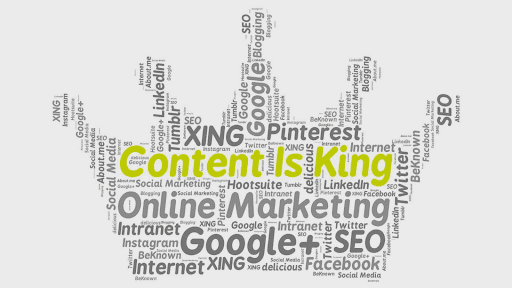3 Copy Missteps Fintech Companies Make (and How to Avoid Them)
The fintech landscape is moving quickly. Vantage Market Research estimates that fintech’s market size will grow from $112.5B in 2021 to $332.5B by 2028. 😲
Naturally, startups and even established financial service providers are scrambling to get a piece of the pie. The biggest challenge these companies face is standing out from the crowd. It’s not enough to develop an innovative product or service. You have to sell it with a copy.
Let’s break down three common copy no-nos and what you can do to avoid them.
#1 Look at me!
So much copy on fintech websites is focused on the company.
We were crowned the best possible tech company.
Our code is high-powered and one-of-a-kind.
Look at all of the degrees our team has!
(These are real examples edited to protect the identity of the companies and emphasize why this is a bad marketing approach.)
What are your first thoughts when you read this copy? I’m left thinking, “So what? What’s in it for me?”
You want all of your copy to resonate with potential clients. The home page of your website should clearly position the customer as the beneficiary of your product. The About Us page should outline your values and purpose and how those work to benefit the client. The product pages should list product specifications and how those benefit the client.
Are you sensing the theme here? It doesn’t matter how smart or shiny your team is if the product they produce doesn’t improve the lives of your customers. You need them to keep the lights on, so make sure your copy talks to them, addresses their pain points and shows how your product is the solution to those problems.
Certifications and awards are great ways to establish expertise, but those belong on bio pages or scattered throughout the text to provide substance.
For example, Look at all of the degrees our team has! can say:
Our expert-led team understands the pulse of the industry to develop products that improve the experience of our customers.
Now the copy is showing the customer how they benefit by working with a bunch of smarties.
#2 I don’t think that word means what you think it means.
Tech companies are notorious for using language that sounds great but doesn’t do a great job of translating meaning. It’s particularly hazardous for fintech companies because you’re adding finance talk on top of tech talk: two areas whose jargon alienates people faster than a quantum physics professor.
These jargon-y words could be buzzwords that are overused, like:
- Artificial Intelligence or AI
- Web3
- Blockchain
- Disrupt (as in disrupt an industry)
- Risk management
- Analytics
- Investment Planning
- Innovation
Some of these examples seem harmless, but the issue is that they’re too vague and don’t really convey meaning to readers. They’re filler words.
One of my favorite movies is The Big Short. The actors are all wonderful and the storytelling is exquisite, but the main reason I love it is that it explains the chaos and aftermath of the 2008 housing market crash. It also specifically calls out the use of industry lingo to make regular people feel stupid and powerless.
Don’t make your clients feel this way.
Show that you’re committed to helping them make an educated and informed purchasing decision. What you’re selling shouldn’t be covered by a black box of vagaries and jargon, just say what you mean. And most importantly, explain what you can do for your clients
Meaningless feature description: Innovation powered by actionable analytics.
Meaningful, client-focused description: We use data to inform our testing and create better products for our clients.
#3 You get what you pay for
Before I dive into this, I freely admit that this point is a bit self-serving. But, readers can tell the difference between cheap copy and crafted copy. One comes across as pushy and self-serving, and the other is helpful and persuasive.
It can be tempting to find the subject matter expert (SME) to write up a white paper explaining the specs and features of your new product. Bonus points if that SME is also a decent writer. Creating good copy means more than being able to spell everything correctly and having a strong opinion about the Oxford comma.
Good copy is engaging, speaks directly to the customer, and persuades them to act. I naturally believe that such a skill is akin to an art form and should be compensated. Luckily, there are a few stats to back me up.
In 2021, $334.5 billion was spent on content marketing worldwide. It’s big business because it successfully creates brand awareness, builds loyalty and trust, nurtures leads, and generates sales.
Last year, Forbes recommended companies dedicate 25% to 35% of their marketing budget to content. If you have a $100,000 budget, that’s at least $25,000 being spent on content marketing.
The Content Marketing Institute (CMI) described content marketing as a sleeping giant in their latest survey. The Covid-19 pandemic made an online presence vital to business’s success and the trend hasn’t really stopped. So spend those dollars wisely by building an in-house team (1-3 people) or finding a freelancer who understands your business and your customers.
As always, your best fix-it tool is to remember you’re writing for humans. Imbue your content with empathy, understanding, and humanity and other humans will connect with you.


